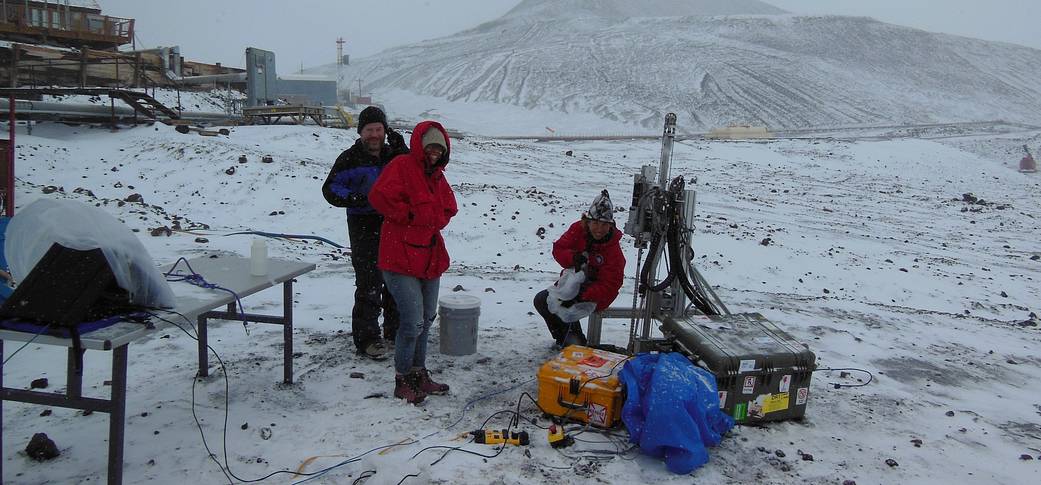In the image above, students operate the Icebreaker drill in a remote classroom at the McMurdo Dry Valley site in Antarctica (left to right: Brian J. Glass, Jackie Goordial, and Margarita Marinova)
The mission was conducted by a team from NASA’s Ames Research Center, led by Chris McKay, and included scientists from McGill University, Montreal, Quebec. The effort was part of an NASA ASTEP (Astrobiology Science and Technology for Exploring Planets) project to test the IceBite auger, a permafrost drill designed to drill into Martian permafrost.
The projects two primary goals were to investigate the microbiology of the driest coldest soils on Earth, and to field test the “Icebreaker” drill. This equipment is designed to drill into Mars’ permafrost and determine if life on Earth can live in Mars-like permafrost.
The University Valley site, located in the high elevation McMurdo Dry Valleys of Antarctica, is home to extremely cold and dry conditions that have existed for over 150,000 years. This location is believed to be the place on Earth that most closely resembles the permafrost found in the northern polar region of Mars at the Phoenix landing site. The results were published Jan. 19 in the International Society for Microbial Ecology (ISME) journal.
Media contact: Darryl E. Waller, Ames Research Center


























